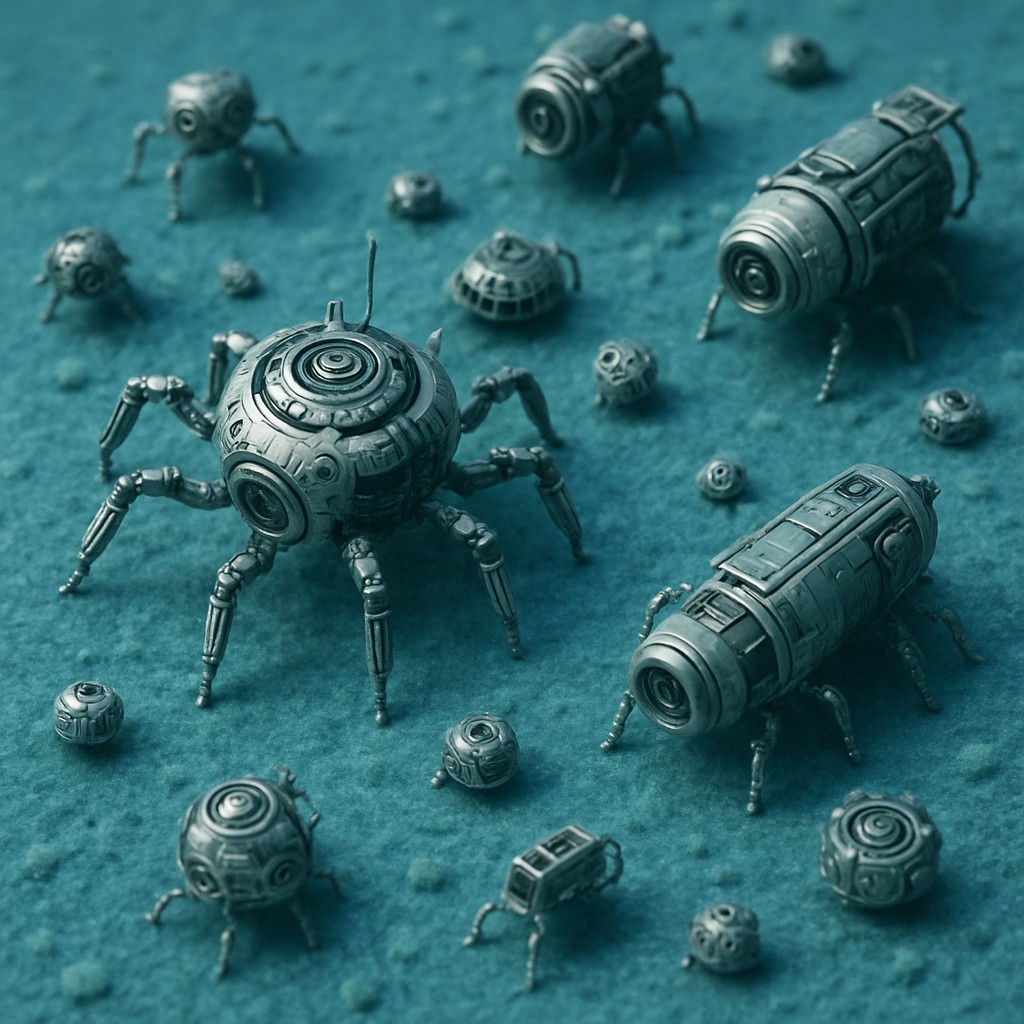FAQs
1. How are these microrobots and nanorobots actually made?
Specialized techniques are used to build them, including 3D printing at the micro-scale, and a process called lithography, which carves tiny patterns into materials. Some nanorobots are even built using biological molecules like DNA.
2. How do we see these microrobots and nanorobots in real-time?
Scientists use high-powered microscopes like optical microscopes, scanning electron microscopes (SEM), and transmission electron microscopes (TEM) to view and track them.
3. What is the current status of microrobots and nanorobots? Are they being used today?
Most microrobots and nanorobots are still in the research and development phase in laboratories. While some early prototypes exist, they aren’t yet widely available for commercial or medical use due to various technical and regulatory challenges.
Reference
1. Ju, X., Chen, C., Oral, C. M., et al. (2025). Technology Roadmap of Micro/Nanorobots. ACS nano.
2. Zhou, H., Mayorga-Martinez, C. C., Pané, S., et al. (2021). Magnetically driven micro and nanorobots. Chemical Reviews, 121(8), 4999-5041.
3. Leal-Estrada, M., Valdez-Garduño, M., Soto, F., et al. (2021). Engineering ultrasound fields to power medical micro/nanorobots. Current Robotics Reports, 2(1), 21-32.
4. Wang, X., Jia, S., Gao, Y., et al. (2025). Optical-driven Miniature Robots: Driving Mechanism, Applications and Future Trends. Lab on a Chip.
5. Feng, Y., An, M., Liu, Y., et al. (2023). Advances in chemically powered micro/nanorobots for biological applications: a review. Advanced functional materials, 33(1), 2209883.
6. Bell, D. J., Leutenegger, S., Hammar, K. M., et al. (2007, April). Flagella-like propulsion for microrobots using a nanocoil and a rotating electromagnetic field. In Proceedings 2007 IEEE international conference on robotics and automation (pp. 1128-1133). IEEE.
7. Katzmeier, F., & Simmel, F. C. (2023). Microrobots powered by concentration polarization electrophoresis (CPEP). Nature Communications, 14(1), 6247.
8. Aziz, A., Pane, S., Iacovacci, V., et al. (2020). Medical imaging of microrobots: Toward in vivo applications. ACS nano, 14(9), 10865-10893.
9. Neettiyath, A., & Pumera, M. (2025). Micro/Nanorobots for Advanced Light‐Based Biosensing and Imaging. Advanced Functional Materials, 35(8), 2415875.
10. Jin, D., & Zhang, L. (2021). Collective behaviors of magnetic active matter: Recent progress toward reconfigurable, adaptive, and multifunctional swarming micro/nanorobots. Accounts of Chemical Research, 55(1), 98-109.
11. Soto, F., Wang, J., Ahmed, R., et al. (2020). Medical micro/nanorobots in precision medicine. Advanced science, 7(21), 2002203.
12. Zhang, L., Wang, S., & Hou, Y. (2025). Magnetic Micro/nanorobots in Cancer Theranostics: From Designed Fabrication to Diverse Applications. ACS nano, 19(8), 7444-7481.
13. Mayorga-Martinez, C. C., Zhang, L., & Pumera, M. (2024). Chemical multiscale robotics for bacterial biofilm treatment. Chemical Society Reviews, 53(5), 2284-2299.
14. Zarepour, A., Khosravi, A., Iravani, S., et al. (2024). Biohybrid micro/nanorobots: pioneering the next generation of medical technology. Advanced Healthcare Materials, 13(31), 2402102.
15. Wich, T., Mikczinski, M., & Fatikow, S. (2010, June). Micro-/Nano-Integration for MEMS based on nano-robotic assembly. In ISR 2010 (41st International Symposium on Robotics) and ROBOTIK 2010 (6th German Conference on Robotics) (pp. 1-8). VDE.
16. Preetam, S. (2024). Nano revolution: pioneering the future of water reclamation with micro-/nano-robots. Nanoscale Advances, 6(10), 2569-2581.
17. Maria‐Hormigos, R., Mayorga‐Martinez, C. C., & Pumera, M. (2023). Magnetic hydrogel microrobots as insecticide carriers for in vivo insect pest control in plants. Small, 19(51), 2204887.
18. Li, S., Zhou, H., Shi, D., et al. (2025). Micro/nanorobots for detecting and eliminating biological and chemical warfare agents. BMEMat, e70021.
19. Liang, Z., He, J., Hu, C., et al. (2023). Next‐generation energy harvesting and storage technologies for robots across all scales. Advanced Intelligent Systems, 5(4), 2200045.
20. Liu, J., Zhuang, R., Zhou, D., et al. (2024). Design and manufacturing of micro/nanorobots. International Journal of Extreme Manufacturing, 6(6), 062006.
21. Sitti, M. (2007). Microscale and nanoscale robotics systems [grand challenges of robotics]. IEEE Robotics & Automation Magazine, 14(1), 53-60.
22. Wu, Z., Chen, Y., Mukasa, D., et al. (2020). Medical micro/nanorobots in complex media. Chemical Society Reviews, 49(22), 8088-8112.
23. Das, T., & Sultana, S. (2024). Multifaceted applications of micro/nanorobots in pharmaceutical drug delivery systems: a comprehensive review. Future Journal of Pharmaceutical Sciences, 10(1), 2.
24. Soto, F., & Chrostowski, R. (2018). Frontiers of medical micro/nanorobotics: in vivo applications and commercialization perspectives toward clinical uses. Frontiers in bioengineering and biotechnology, 6, 170.
25. Yang, L., Jiang, J., Ji, F., et al. (2024). Machine learning for micro-and nanorobots. Nature Machine Intelligence, 6(6), 605-618.
